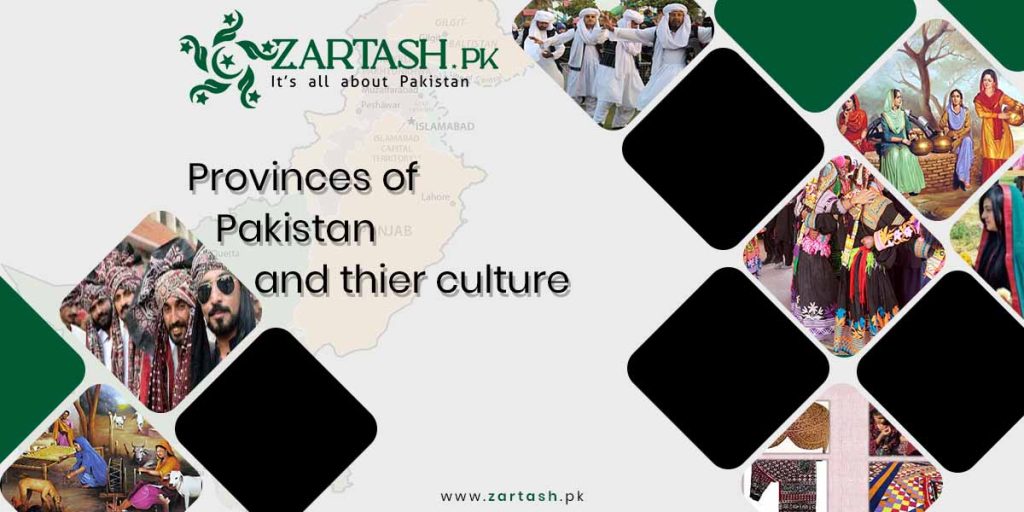1. Creation of the District:
District Barkhan is a district in the province of Balochistan. It shares its borders with the province of Punjab to the east and the Balochistan districts of Dera Bugti to the south, Kohlu to the west, Loralai to the northwest and Musakhel to the north. The district’s headquarters is the town of Barkhan. It was granted the status of a separate district on 31 December 1991, prior to which it was a tehsil within Loralai District.
Population
Its population according to population Census 2017 is 172,000 and its area is 3514 sq km. There is only one Tehsil namely Barkhan in the district.
Details of Tehsils & Sub-tehsils
- tehsil Rakhni
- Sub tehsil Vittakri
- Sub tehsil baghao
- sub tehsil rarkhan
Number of Municipal Committees & Union Councils
- Municipal Committees …01
- Union councils …09
Agriculture
The source of earning of the people mainly is agriculture and livestock. Well known crops grown in the district are Wheat, Jawar, Cotton, Pulses, vegetation Tomatoes, Chilies, Onion, apple orchards etc. No famous river pass through the district except small streams that flow out from the surrounding mountains after heavy rainfall because the District lies within Moon soon range. The climate of the district is hot in summer and cold in winter.
Climate
In summer maximum temperature reaches 42°C and in winter minimum temperature touches -3°C. The Flood caused by the heavy rainfall is to the extent that lands are being affected and sometime the people living nearby the streams are also affected resulting in the loss of both life and property. The lands, orchards, farms, which have been constructed in front of the flows of rainy water are being hit generally.
Geography
Barkhan is the eighth-smallest district of Balochistan and has an area of 3,410 square kilometers. Barkhan District lies between 69°3′-70° 4′ East longitude and 29°37′-30°21′ North latitude, consisting of one tehsil and eight union councils. The location of Barkhan is 541 km (aerial distance) south-west (220 degrees bearing) of Pakistan’s capital city Islamabad and 245 km east (97 degrees bearing) from Quetta City, the provincial capital of Balochistan.
Topography
The landscape of Barkhan consists of plains, valleys and mountains varying in ground elevation ranging from 841 to 2,031 meters above Mean Sea Level (MSL). The district consists of one main valley, called Barkhan, and several smaller valleys, which are separated from the main valley by low ranges of hills running in a southwest direction. The Barkhan valley is enclosed on the north side by scattered low hills, which divide the drainage water of the valley from the waters flowing into the Rakhni stream in the southwest, and on the west and northwest side by the great Jandran range. The valley ends in the Vitakari valley. To the east of the Sukha range is the Kharcha valley, which is bounded by the Phulai range on the east. The hills in the district belong to the Suleman range; the principal hills are known as Kala Pahar in the north, Karwada, Bibar, Jandra and Mar or Mukhmar in the west, Andari and Sukha in the south, Phulai and Khawaj in the east, and Mazara, Tagha, Dig and Deka in the centre and Rakhni areas. The ranges mostly consist of earth sand and stones; some portions are rocky and not easily accessible. The Jandran range is mostly rocky. In the south runs the Han stream with its tributaries. The Han stream runs in a southwest direction and carries the drainage of the Han pass and the southeastern slopes of the Jandran range. At Dhamani (Barkhan Tehsil) the stream becomes perennial up to its junction with the Kah River in Dera Ghazi Khan district. Dhaula stream, its tributary, brings water from the hills situated to the south of the Bagha valley and irrigates a number of villages in the Barkhan valley and joins Han in Vitakari. Rakhni and Han join Kah Stream which then passes into the district of Dera Ghazi Khan.
A third important stream is Bala Dhaka. This stream lies in Berg-Sham Mauza of the Barkhan Tehsil. The stream is a tributary of the Narechi River (Duki Tehsil). Water in this stream comes down from the southwestern slopes of hills located north of the Han pass. The stream irrigates a very small area of Mauza Berg-Sham, and then its water passes in the Duki Tehsil.
Archaeological Sites
During geological mapping and bio-stratigraphic research activity in Barkhan District, the geologists of the Geological Survey of Pakistan (GSP) discovered the first dinosaur fossils in Pakistan.[7]
Khetranisaurus
District Barkhan made headlines when million years old fossils of a dinosaurs was found in the area of Vatakari.
Etymology; Khetrani, honoring the Khetran tribe of Barkhan district; saurus means reptiles. The species specific epithet barkhani, honoring the Barkhan which is the host District of dinosaurs.
Demographics
At the time of the 2017 census the district had a population of 171,025, of which 89,911 were males and 81,100 females. Rural population was 158,824 (92.87%) while the urban population was 12,201 (7.13%). The literacy rate was 26.99% – the male literacy rate was 36.35% while the female literacy rate was 16.61%. 82 people in the district were from religious minorities.
At the time of the 2017 census, 94.79% of the population spoke Balochi and 1.48% Pashto as their first language. There are also 2,973 speakers of a language recorded as ‘Other’ on the census, possibly Khetrani.
The predominant language is Balochi, which accounts for 75% of the population. There is also a sizeable community of speakers of the Indo-Aryan language Khetrani. There are four main tribes in Barkhan District: the Khetran, Marri tribe, Hasni tribe and Buzdar tribe. The Khetrans have a chief (called Tumandar) of the tribe, while, each sub-clan/section is represented by a headman (called Wadera).
Government and politics
Barkhan started functioning as a district on 31 December 1991. Previously, it was a tehsil of district Loralai. The main motivation for granting Barkhan the status of a district was to provide basic facilities at a grassroots level and to give people easy access to public offices. District Barkhan comprises only one Tehsil, Barkhan itself.
- DISTRICT SETUP
- There are nineteen union councils’ representatives in the District Council of Barkhan, one from each union council. Special seats are allocated to the representatives of workers/peasants, women and minorities as discussed above. All the elected chairmen of the Municipal Committees are also members of the District Council. The District Council is concerned with rural development activities and functions pertaining to, public health, education, agricultural development and economic welfare, articles of food and drink, drainage, livestock and dairy development, culture and public safety. The District Council can generate revenue by levying fees and various taxes as given in part II of second schedule of BLGA 2010.
-
 Local government organogram (polititics)
Local government organogram (polititics)
- The Balochistan Local Government Ordinance (BLGO) of 1980 was intended to involve local populations in the development of their areas; it was replaced by BLGO 2001, which introduced the concept of district government. Under BLGO 2001, Barkhan District had one tehsil and eight union councils. The district was administered by a single line of administration that covered both the rural as well as the urban areas. The system continued for two tenures and was again modified through the approval of BLGA 2010. The present system, under the Local Government Act 2010, is similar to BLGO 1980 in that it emphasizes a rural-urban division, but no elections were held under the latest system.
2. Purpose of the plan
- The purpose of the plan can be brought into light on the basis of the following facts :
- Barkhan District lies within Monsoon range.
- Heavy rainfall and flash flood are usually expected in monsoon period.
- Heavy rain/ flood on 22nd July, 2010 caused death of 12 persons and property of general public was also damaged in U.C Nahar Kot, Sadar, Town & Chohar Kot.
- Heavy rain/ flood in July, 2011 caused huge loss of property/crops of general public in the district.
- Heavy rain, hailstorm with thunderstorm are being observed/started in the
district especially in Baghao area heavy loss of standing crops and property has been reported.
Keeping in view the above facts, the purpose of the plan is to minimize the loss of both life and property and to ensure timely provision of relief to common people if they are affected by the heavy rain /flood so that the sufferings of affected people may be mitigated.
2. PARTS OF THE PLAN
Part :- I
The following measures have been taken by the District Administration so as to achieve the purpose of the plan.
- Proper Campaign of Awareness Among the General Public:-
- With a view to have proper protection from the flood the people should be warned of the effects and losses likely to be caused by the flood. The Tehsildar, Barkhan will launch campaign of awareness among the general masses to vacate their places of residing lying in front of the flow of water or nearby the streams, channels and water courses and shift to safe places. The Agriculture, Irrigation and livestock departments will also play their role.
The Tehsildar will utilize the services of local police, Levies, BC, revenue staff as well as announcement in Mosques.
- Presence of District Officers:-
- All Heads of line departments are directed to remain present at the station along with staff. They are further requested to keep the
available stocks, equipment and machinery ready by ensuring that they are in working condition which will be utilized in case of emergency / flood.
- Establishment of Effective Communication system:-
- Since no telephone facilities are available nor any mobile system works in the vast area of the district, therefore, establishment of an effective communication system is quite necessary. The Tehsildar Barkhan is directed to install base sets at each and every important point/location by ensuring that various corners are linked not only with each other but also with the Headquarter through this system. In case of emergency the wireless system of Levies, Police and FC will also be utilized.
- Proper and regular examination of dams:-
- The Irrigation Department Barkhan are requested to examine the dams/ bridges regularly by maintaining their condition such that they could not meet any leakage/ breakage in case of heavy rain / flood. This is not out of place to mention that during last heavy rain/ flood of July, 2010, the breakage of Bibar Tak dam caused heavy loss of life and property.
The Irrigation Department will also provide list of dams with their condition and daily report of dams will also be shared with Flood Control Room.
- Regular examination of bridges/ Roads:-
- The XEN Provincial B&R-I Barkhan
are requested to examine the bridges, link and main roads regularly by maintaining their condition such that they could not meet any blockage in case of heavy rain / flood. This is not out of place to mention that during last heavy rain/ flood of July, 2010, the few
bridges and roads were also damaged with the result that Inter / Intra district movement of traffic came to a halt, therefore special attention be focused by the XEN Road on this important job. The machinery of road available in working condition and staff /road
Cooly may also bound to remained present at their place of posting.
- Presence of Local Government Staff :-
- The Chief Officer Municipal Committee and District Council Barkhan are requested to bound the staff/ sweeper to remained
present at duty station, so that the flood water may be disposed off.
- Presence of PHE Staff :-
- The XEN PHE Barkhan are requested to bound the staff/Valve man to remained present at duty station, so that pure drinking water may be supplied to flood affectees as well as IDP camps.
FEDERAL AND GOVERNMENT OFFICES AND SERVICES
A number of Federal and Provincial Government departments provide services at the district level. Except for FBS, Civil Defense and Passport and immigration, all other major departments are functional at the district level, and some departments have offices even at the tehsil level. (DC office, Election Commission of Pakistan, 2010)
FLORA AND FAUNA
- Mammals: wolf, hill fox, Asiatic jackal, striped hyaena, cape hare, porcupine, Afghan hedgehog, and stone marten
- Birds: chukar (Alectoris Chukar), see-see partridge (Ammoperdix Griseogularis), kestrel (Falco Tinnunculus), golden eagle (Aquila Chrysaetos Daphanea), a number of finches, buntings, seasonal/migratory waterfowls, hawks, bustards and sand grouse
- Reptiles: Afghan tortoise (Agrionemys Horsfieldii), Afghan agama (Trapelus Megalonyx), Indian cobra (Naja naja), saw-scale viper (Echis Carinatus), dwarf dark-headed racer (Eirenis Persica Walteri) Levantine viper (Macrovipera Lebetina)
- Major crops:
- Rabi crops: wheat, barley, vegetable and Fodder
- Kharif crops: sorghum (jowar), millet (bajra), maize, mung bean, mash bean, fruits, onion, potato, vegetable, melon, chili, fodder, garlic and cotton
- Major fruits: apricot, peach, grapes, almond, pomegranate, apple, plum
NATURAL RESOURCES
District Barkhan has deposits of coal and gypsum. The coal deposits are not large. In some places, very minute quantities of coal were found, but the work was abandoned as there was no prospect of commercial benefits. As recently as 2001, a British oil exploration company conducted a survey and found oil reserves in Vitakari, Gadobra and some other areas. The Oil & Gas Development Company Ltd. discovered gas and condensate at Barkhan in 2021.
EDUCATION & EDUCATIONAL INSTITUTIONS:-
According to Pakistan District Education Ranking, a report by Alif Ailaan, district Barkhan is ranked at number 100 nationally with a score of 50.24. The learning score of Barkhan is 54.58 and gender parity of 62.75.
The national rank according to readiness is 100, with a readiness score of 22.66 and primary ratio of 9.7. The school infrastructure score is 20.53, ranking Barkhan district nationally at 153. Functional toilets are a major issues in schools of Barkhan with a score of 2.65.
Issues reported in TaleemDo! App usually relate to poor building walls, putting students lives at risk or in some places no building walls at all. Basic facilities are missing and there are also many complaints about lack of quality teachers.
In the case of rural females, only 6% had ever-attended any school and only 3% graduated from primary or higher levels. The primary net attendance ratio of school-going age children was 39%, with girls lower than boys (36% versus 41%). This indicates that 61% children were still out of school and will either join late, or probably will never enroll. The total enrollment for middle classes up to December 2009 was 1,085, and total enrollment in secondary classes was only 595. One of the major reasons for low enrollment in secondary levels is non-availability of schools. Against 572 primary schools in the district, there are only 17 middle and 14 high schools. Primary school completion is relatively better (65%).
Industry and Manufacturing Barkhan.
The district has no industry worth mentioning, though it looks suitable for agro based industry. so far neither private enterprise nor government is inclined to move in this direction.
Tourism.
The district Barkhan has number of tourist/historical places. Peer Dada Shah Memood Tomb, Suran Tomb, Valley of Nirri Baghao and Mazara Mountain Eshani etc. A vast number of people from adjacent districts and visit the area.
Archaeological Sites
The district is rich in archaeological sites and historical monuments. Some are mentioned as under:
- Tomb of Peer Dada Shah Mehmood.
- Tomb of Peer Lakha Sain
- Tomb of Peer Dada Jund
- Tomb of Peer Dada Akwund
- Tomb of Peer Minaji Mastana
- fTomb of Suran (Nahar Kot)
Shrines
Main shrines in the district are Peer Dada Shah Mehmood, Mianji Mastana, Baba Akhwand, Dada Jund, Baba Shaheed, Dada Haji and Baba Gharseen (Rakhni).
Handicrafts.
The Government of Balochistan, Social Welfare Department is committed to serve the general masses of the entire province with energetic manner under the rules of Business, 2011. Training programme in different trades organized by the Department for uplifting the Livelihood of deprived people of the areas concerned, the women empowerment and their uplifting is one of the main preference and priority of the department.
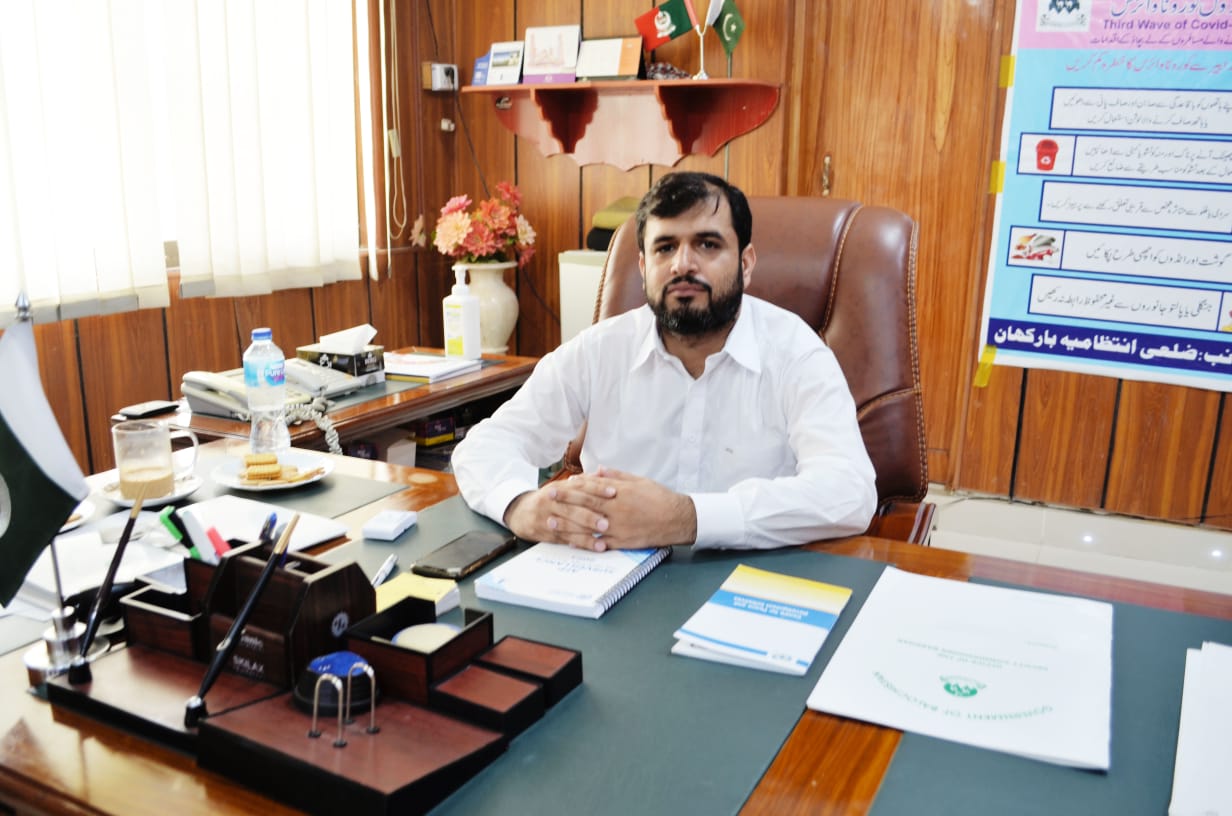

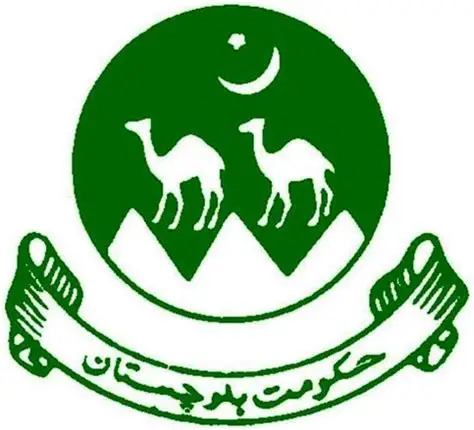
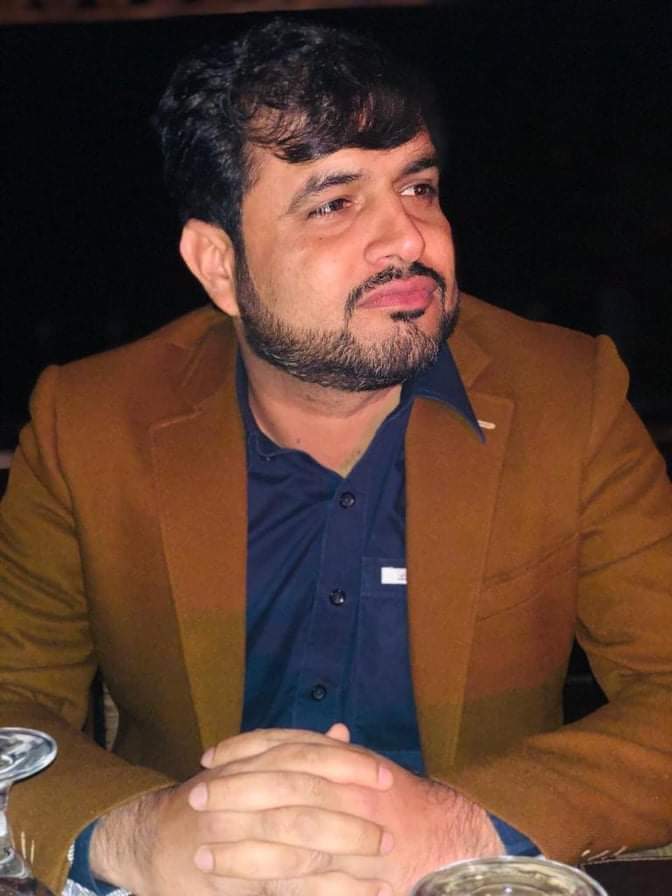
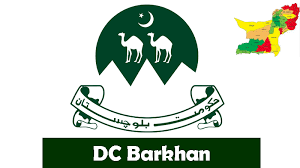
 Local government organogram (polititics)
Local government organogram (polititics)
